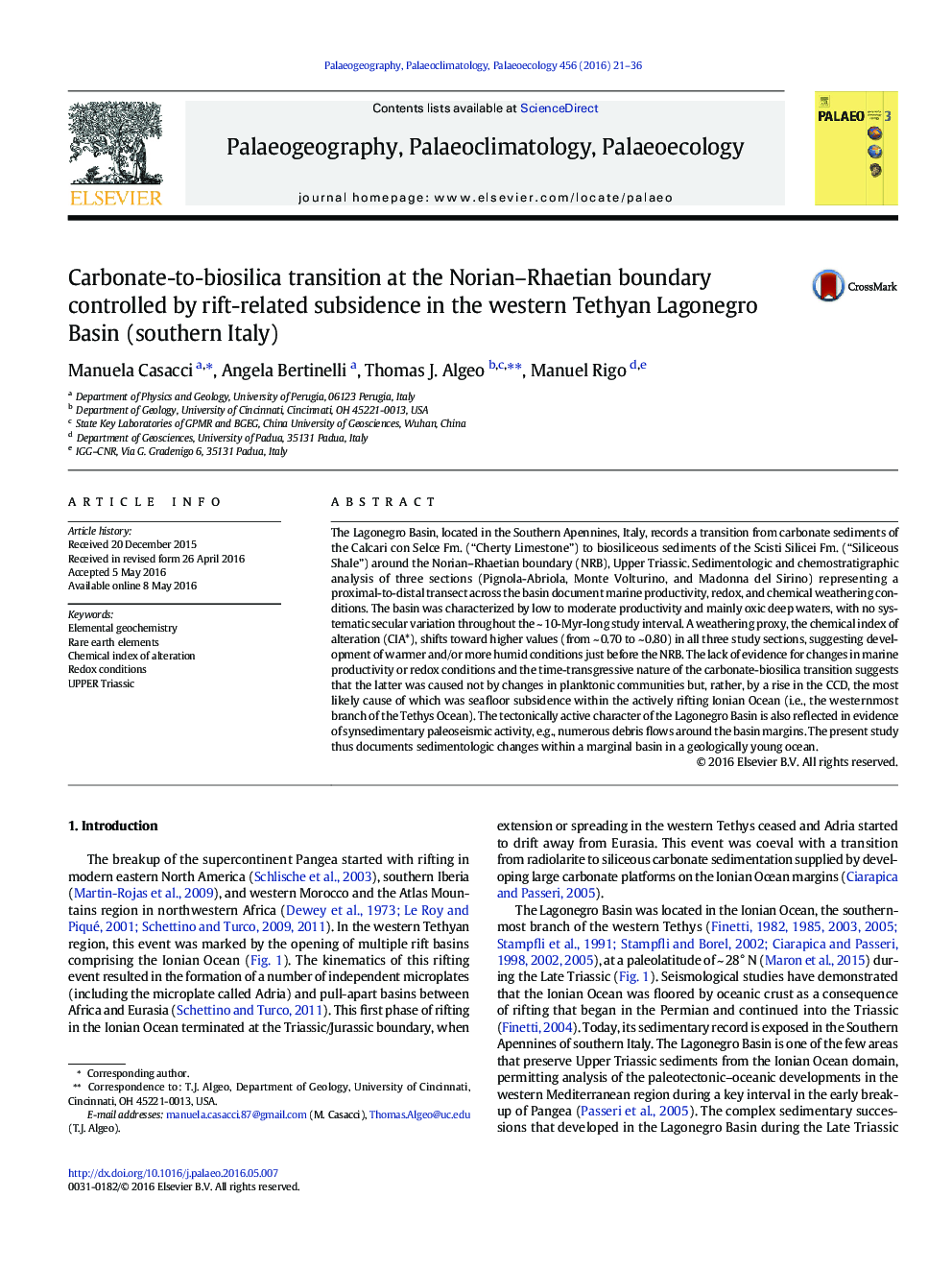| کد مقاله | کد نشریه | سال انتشار | مقاله انگلیسی | نسخه تمام متن |
|---|---|---|---|---|
| 4465677 | 1622135 | 2016 | 16 صفحه PDF | دانلود رایگان |

• Paleoceanographic evolution of western Tethyan (Ionian Ocean) Lagonegro Basin
• Subbasins with different sediment patterns developed due to half-graben formation
• Time-transgressive carbonate to biosilica transition caused by basin subsidence
• Marine productivity was low and deep-water redox conditions were mainly oxic.
• CIA proxy suggests warmer/more humid condition around the Norian–Rhaetian boundary.
The Lagonegro Basin, located in the Southern Apennines, Italy, records a transition from carbonate sediments of the Calcari con Selce Fm. (“Cherty Limestone”) to biosiliceous sediments of the Scisti Silicei Fm. (“Siliceous Shale”) around the Norian–Rhaetian boundary (NRB), Upper Triassic. Sedimentologic and chemostratigraphic analysis of three sections (Pignola-Abriola, Monte Volturino, and Madonna del Sirino) representing a proximal-to-distal transect across the basin document marine productivity, redox, and chemical weathering conditions. The basin was characterized by low to moderate productivity and mainly oxic deep waters, with no systematic secular variation throughout the ~ 10-Myr-long study interval. A weathering proxy, the chemical index of alteration (CIA*), shifts toward higher values (from ~ 0.70 to ~ 0.80) in all three study sections, suggesting development of warmer and/or more humid conditions just before the NRB. The lack of evidence for changes in marine productivity or redox conditions and the time-transgressive nature of the carbonate-biosilica transition suggests that the latter was caused not by changes in planktonic communities but, rather, by a rise in the CCD, the most likely cause of which was seafloor subsidence within the actively rifting Ionian Ocean (i.e., the westernmost branch of the Tethys Ocean). The tectonically active character of the Lagonegro Basin is also reflected in evidence of synsedimentary paleoseismic activity, e.g., numerous debris flows around the basin margins. The present study thus documents sedimentologic changes within a marginal basin in a geologically young ocean.
Journal: Palaeogeography, Palaeoclimatology, Palaeoecology - Volume 456, 15 August 2016, Pages 21–36